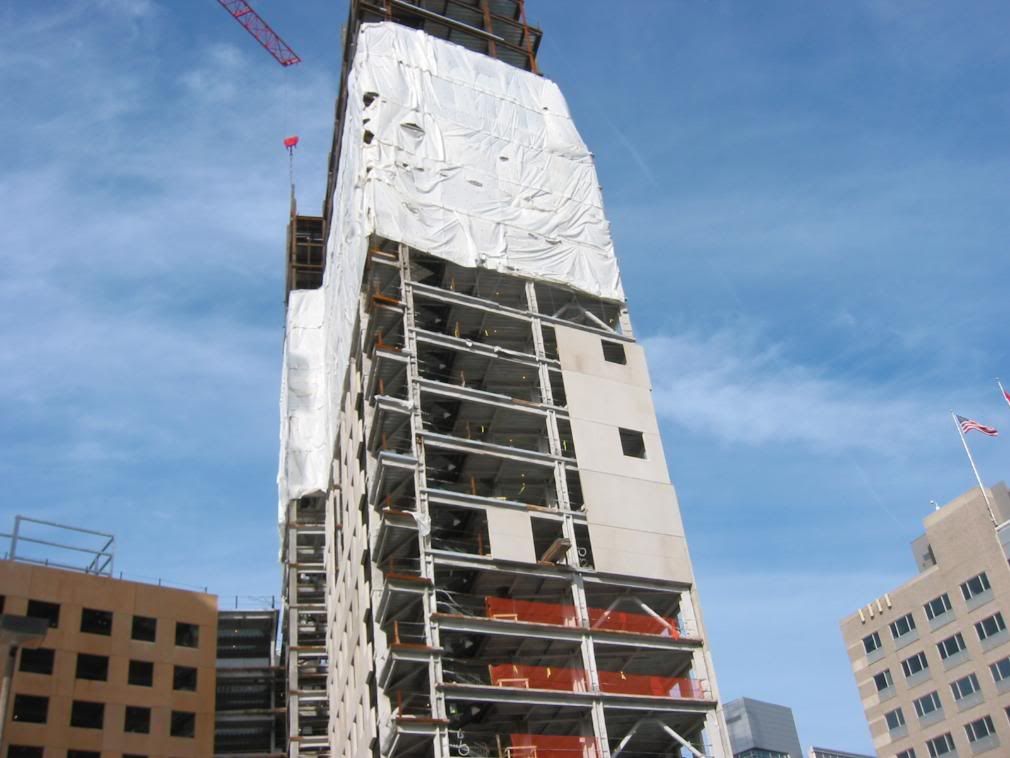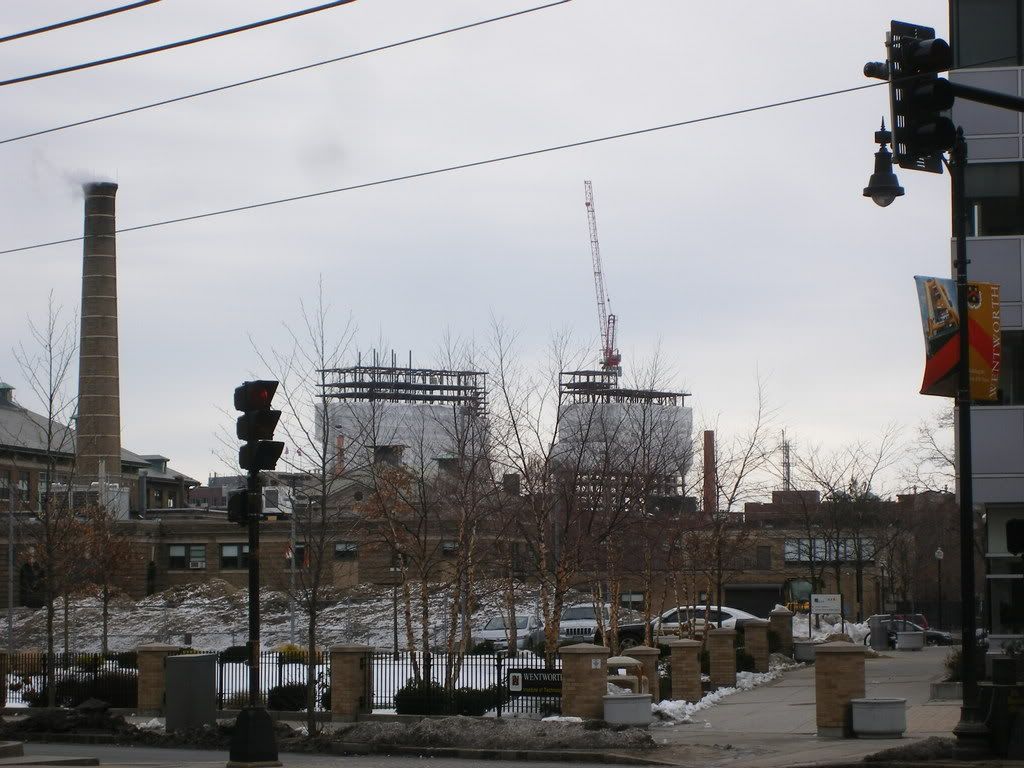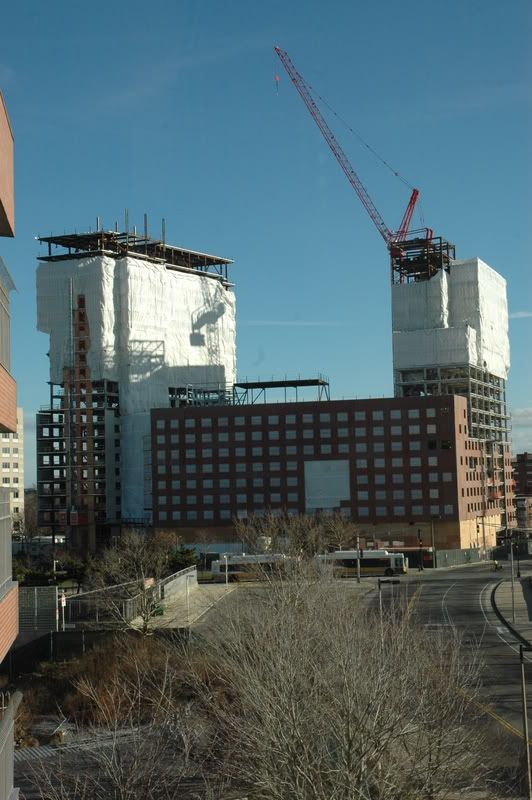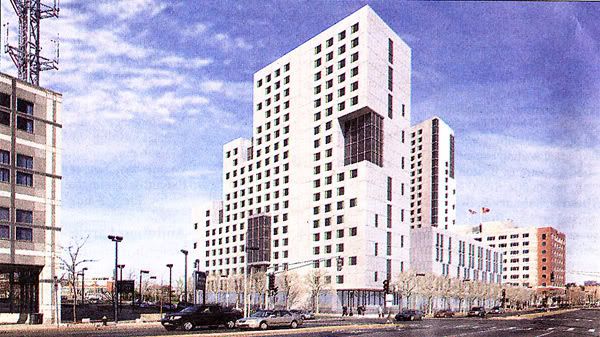Sometimes I wonder if the people posting on this forum are just setting down in the orientation island of 2nd life
This is a major metro area that has been settled in some fashion for nearly 400 years. However -- Nothing here is permanent -- of course its a bit more permanent than most Las Vegas Casinos. Remember that the Commonwealth in its infinite wisdom obliterated John Hancock's Mansion for the expansion of the State House. The private sector wasn?t much better removing the ?Old Feather Store,? ?Province House,? except for some garden steps and the ?Tontine Crescent.? We also lost 109 Court Street {where Bell met Watson} and 5 Exeter Place where Bell and Watson conducted their experiments ? both were lost because the city of Boston moved, widened or straightened streets nearly 100 years ago. The Little Building {now an Emerson dorm} was picked-up and moved to accommodate the construction of the Boylston Green Line Station around 1900. Before the Fairmont Copley there was the Victorian MFA Building, before the Prudential Complex there was Mechanics Hall. Before Roxbury was ?Urban? it was mostly a Jewish ghetto. Before the Northend was Italian {or now faux Italian} it was mostly Irish and, before that it was a tenement district {e.g. Paul Revere?s House was a rooming house}.
Overall, since the early 1600?s of Winthrop?s the ?City on a Hill? -- people have been moving or removing houses, families, businesses, mountains, wharfs, pipes, forests, farms throughout the metro area. If you doubt this take a walk in a ?Primeval Forest? and watch out that you don?t trip over a stone wall, or fall into a cellar hole. Almost all of the rail track that is visible and some that it still there just under the surface of some major streets was in place by the beginning of the 20th century. A lot of the subway extensions have just taken over {Green Line D} or run parallel in the right-of-way {Red Line to Braintree, Red Line to Alewife from Harvard}of old rail lines. Most of the flat parts of Boston and Cambridge and nearly all of Logan are actually old wet lands {marsh, tidal river basin or shallow harbor bottom} that have been filled by removing hills of gravel both in Boston and places as remote as Needham and transporting it by rail and later by truck.
The general trend until recently was to move residences away from the harbor and the financial district. Older residential areas either were torn down for industry and commerce or deteriorated into lower and lower cost housing. Industrial areas have come and gone {there was a lot of meat and poultry processing downtown Boston, in Cambridge and slaughterhouses in Brighton -- all of that thankfully is gone completely or moved to more modern facilities.
Transportation projects have move or removed many buildings and even entire neighborhoods ? and this didn?t start with the Big Dig or even the original elevated Central Artery. If you think that the highway cut off the old wharf buildings ? well some of it happened in the 1950?s, but a lot of it happened in the 1920?s and even earlier {e.g. Cross Street, Sumner Tunnel, Blue Line Tunnel}. Remember that before the Custom?s House was a Marriott and even before the tower was built -- that ships tied up at the foot of the steps to pay their customs duties.
More recently, back in the 1960's the area of Rowe's Wharf and today?s multi million dollar condos was mostly parking lots, a few remnant industrial buildings and rotting wharf buildings complete with water view {straight down through the holes in the floors} where a student could rent a large apartment for $100 per month or less -- rats included free of charge. At the same time, there were students living in rooming houses in the Berkley block of Commonwealth Avenue. Naval Officers worked in the building across the street from the BEC and Westin and in Charleston where there was a thriving heavy industrial operation {although there were a lot less than the 50,000 people who had worked in Charlestown and Southy building and repairing ships during WWII}.
What is now the suburban office park of Cambridge Center / Kendal Square was once the teeming industrial morass of Kendal Square in the days of the Kendal Boiler and Tank Company and Boston Woven Hose. In between the two incarnations of Kendal Square -- there was the vast wasteland era as the original industrial buildings had been leveled for the NASA Electronics Research Center and then after the Center {now the Johnson Space Center} moved to Houston nothing for two decades took its place.
Before people pop-off on this forum -- they should do some research to find out about the history of the area, its economy, demographics, etc. Otherwise all we get is uninformed posturing and clich? spewing -- such as "Redlining, White Flight, etc}. There are plenty of well researched book on Boston and its environs such as Nancy S. Seasholes?, ?Gaining Ground: A History of Landmaking in Boston,? where you can find out what happened before you arrived on the scene. Also, its worth doing some wandering about and wondering why the front of a building might be curved in two directions {left to the reader to locate} ? hint it has to do with streets that themselves were curved to accommodate the side of a hill ? long since vanished.
After, you do the requisite homework ? feel free to pontificate about the present and the future ? real or imagined.
Westy








